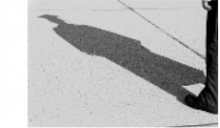 PhD defense of Elaheh Elyasi on 04/12/2021
PhD defense of Elaheh Elyasi on 04/12/2021


PhD Defense of Elaheh Elyasi from TIMC BIOMECA team on April, the12th at 3pm :
" Biomechanical modeling of the knee joint for computer-assisted medical interventions. "
Thesis supervision:
- Mr Yohan Payan, Directeur de recherche CNRS, laboratoire TIMC UMR 5525, Université Grenoble Alpes, Director
- Mr Antoine Perrier, Podologue AP-HP Hôpital Raymond Poincaré, chercheur associé CNRS au laboratoire TIMC UMR 5525, Université Grenoble Alpes, Co-Director
Jury:
- William R. Taylor, Professor, Institute for Biomechanics, ETH Zurich, Reporter
- Yoann Lafon, Maître de Conférence, Claude Bernard University Lyon 1, Reporter
- Ian Stavness, Associate Professor, University of Saskatchewan, Department of Computer Science, Examiner
- Jocelyne Troccaz, Directrice de recherche CNRS Délégation Alpes, laboratoire TIMC - UMR 5525, Université Grenoble Alpes, Chairman
- Raphaël Dumas, Directeur de recherche , IFSTTAR, Invited
- Pierre-Yves Rohan, Maître de Conférence, Arts et Métiers ParisTech - ENSAM, Invited
Broadcast: https://youtu.be/R9lCMMynFBU
 Key words:
Key words:
Biomechanical simulation, Lower limb, Combined finite element and multibody approach, High tibial osteotomy, Gait simulation.
 Abstract:
Abstract:
Biomechanical models of the lower limb are generated with various objectives. Musculoskeletal models with multibody approaches provide the opportunity to estimate muscle forces and joint contact forces based on the kinematic and kinetic data obtained from a subject. However, this approach is not sufficient to directly investigate the local mechanics of the joint. In this context, finite element models are used to estimate local joint mechanics including soft tissue deformation and stress fields.
In this thesis, a modular model of the lower limb is developed in a platform that combines multibody and finite element modeling techniques in the same package. This can facilitate the process to answer a variety of questions about muscles and joints that could not have been simply answered without using multiple software packages. In this sense, the generated model is used for two applications contributing to medical and biomechanical fields. The first application is related to selective complications of the high tibial osteotomy that is an orthopedic surgery performed on patients with a lower limb deformity. The second application uses the combined modeling technique for a simulation of gait to test the consistency of joint modeling between inverse multibody musculoskeletal models and forward-based deformable models which are normally used in series in multiscale modeling workflows.
